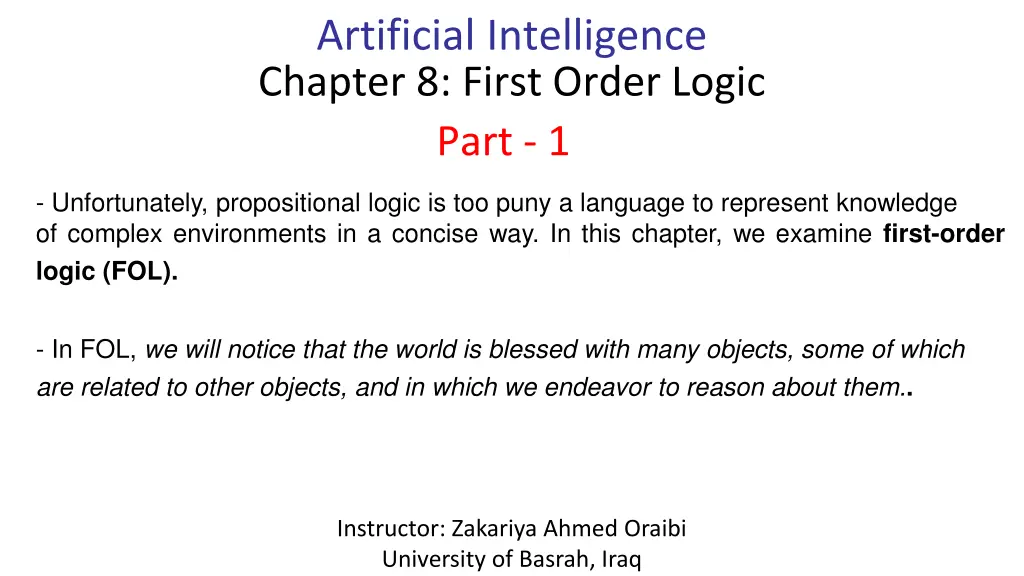
Harnessing First-Order Logic for Complex Knowledge Representation
Explore the power of first-order logic (FOL) as a robust language for representing complex environments and reasoning about diverse objects, predicates, and functions. Delve into FOL syntax, atomic and complex sentences, quantification, and various inference methods like Forward Chaining. Uncover how substitution plays a vital role in FOL inference.
Download Presentation

Please find below an Image/Link to download the presentation.
The content on the website is provided AS IS for your information and personal use only. It may not be sold, licensed, or shared on other websites without obtaining consent from the author. If you encounter any issues during the download, it is possible that the publisher has removed the file from their server.
You are allowed to download the files provided on this website for personal or commercial use, subject to the condition that they are used lawfully. All files are the property of their respective owners.
The content on the website is provided AS IS for your information and personal use only. It may not be sold, licensed, or shared on other websites without obtaining consent from the author.
E N D
Presentation Transcript
Artificial Intelligence Chapter 8: First Order Logic Part - 1 - Unfortunately, propositional logic is too puny a language to represent knowledge of complex environments in a concise way. In this chapter, we examine first-order logic (FOL). - In FOL, we will notice that the world is blessed with many objects, some of which are related to other objects, and in which we endeavor to reason about them.. Instructor: Zakariya Ahmed Oraibi University of Basrah, Iraq
FOL Contains - Objects: people, houses, numbers, colors, wars, . - Predicates: to describe relations between objects. Example: Red(Car), IsBiggerThan(4,2) - Functions: Father of, best friend, one more than, .. Example: Sqrt(4), Mul(x, y)
Syntax of FOL - Objects: people, houses, numbers, colors, wars, . - Predicates: to describe relations between objects. Example: Red(Car), IsBiggerThan(4,2) - Functions: Father of, best friend, one more than, .. Example: Sqrt(4), Mul(x, y)
Universal Quantification Refers to Universal Quantification
Existential Quantification Refers to Existential
Inference with FOL - We will use three methods for FOL inference: 1- Forward Chaining. 2- Backward Chaining. 3- Resolution. - All methods require a technique called Substitution: Substitution is the replacement of variable(s) in a sentence with expressions SUBST({x/Richard, y/John}, Brother(x,y))=Brother(Richard, John)
Forward Chaining Prove: Criminal (West)? We should start with facts until we reach to the conclusion
Forward Chaining Prove: Criminal (West)?
Forward Chaining x = West Prove: Criminal (West)?
Forward Chaining (Example) KB Facts (Predicates with no Variables) Prove: Sibling(John, Fred)?
Backward Chaining Start with goal sentence; search for rules that support goals, adding new sub-goals until match with KB facts or no further inference can be made.
To be continued Thank You
